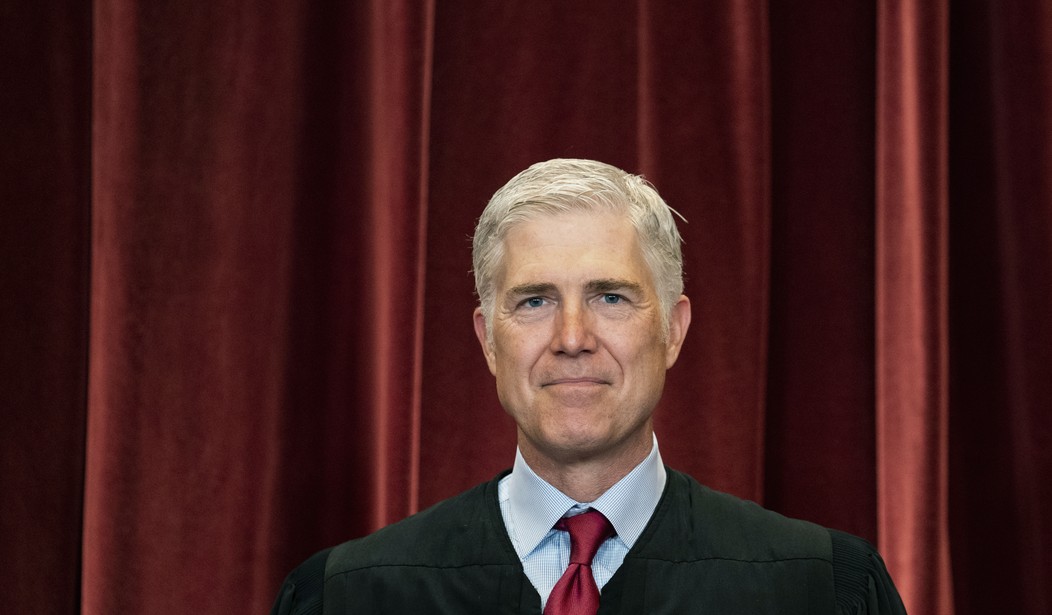Friday, the Supreme Court on Friday delivered another wild ride as several highly-anticipated decisions came down, leaving Democrats reeling.
As RedState reported, Joe Biden’s clearly illegal student loan scheme was stopped in its tracks by a 6-3 split on the court. That finally put to bed a cynical ploy by the president meant to buy votes before the 2022 mid-terms.
On the other side was the 303 Creative case, which once again put the future of religious liberty in the United States on the chopping block. In the end, another 6-3 decision won the day, ruling that Lorie Smith (the owner of the company) could not be compelled to violate her religious beliefs by creating websites for gay weddings.
Not surprisingly, the case originated in Colorado, the same state that has spent somewhere around a decade hassling Jack Phillips, owner of Masterpiece Cakeshop. In 2018, the Supreme Court came to a narrow decision in his favor, though Colorado’s Civil Rights Commission has continued to make his life hell since then.
In the 303 Creative decision, things were a bit broader, with the court finding that the government could not compel an individual to express a message that violates their sincerely-held religious beliefs.
The Alliance Defending Freedom, which led the charge, released this statement in response (Townhall).
“The court reiterated that it’s unconstitutional for the state to eliminate from the public square ideas it dislikes, including the belief that marriage is the union of husband and wife. Disagreement isn’t discrimination, and the government can’t mislabel speech as discrimination to censor it,” Waggoner said. “Lorie works with everyone, including clients who identify as LGBT. As the court highlighted, her decisions to create speech always turn on what message is requested, never on who requests it.
The ruling makes clear that nondiscrimination laws remain firmly in place, and that the government has never needed to compel speech to ensure access to goods and services. This is a win for all Americans. The government should no more censor Lorie for speaking consistent with her beliefs about marriage than it should punish an LGBT graphic designer for declining to criticize same-sex marriage. If we desire freedom for ourselves, we must defend it for others.”
The fun didn’t stop with the overall ruling, though. Justice Neil Gorsuch pulled no punches in reaming Justice Sonia Sotomayor’s ridiculous, confused dissent. He unleashed on Sotomayor’s twisted logic in which she jumps from one side of the issue to the other without even a hint of an interpretative standard.
Lmfao Justice Gorsuch spent a good portion of the majority opinion in 303 creative taking an absolute nuke to Sotomayor's dissent:
"It is difficult to read the dissent and conclude we are looking at the same case." pic.twitter.com/ixsj25zhv2
— Greg Price (@greg_price11) June 30, 2023
It is difficult to read the dissent and conclude we are looking at the same case. Much of it focuses on the evolution of public accommodations laws, post, at 7–13, and the strides gay Americans have made towards securing equal justice under law, post, at 14–17. And, no doubt, there is much to applaud here. But none of this answers the question we face today: Can a State force someone who provides her own expressive services to abandon her conscience and speak its preferred message instead?
That’s a common theme with the liberal justices, with Sotomayor often being the worst offender. Because everything they do is formulated around policy preferences and not an actual interpretation of the law, you end up with arguments being made that don’t even address the actual question at hand in the case. The purpose of the court isn’t to advance “justice” or cement the “strides” of some identity group. It’s to look at the law objectively.
In some places, the dissent gets so turned around about the facts that it opens fire on its own position. For instance: While stressing that a Colorado company cannot refuse “the full and equal enjoyment of [its] services” based on a customer’s protected status, post, at 27, the dissent assures us that a company selling creative services “to the public” does have a right “to decide what messages to include or not to include,” post, at 28. But if that is true, what are we even debating?
Instead of addressing the parties’ stipulations about the case actually before us, the dissent spends much of its time adrift on a sea of hypotheticals about photographers, stationers, and others, asking if they too provide expressive services covered by the First Amendment. Post, at 21-29, 31-32, 37. Both those cases are not this case.
Gorsuch’s takedown goes much further than just the above excerpts. He points out several specific points at which Sotomayor contradicts herself or dives off into wild hypotheticals that don’t address the case at hand. It’s a thermonuclear bomb of a critique and one that thoroughly exposes just how rudderless the liberal justices are.















Join the conversation as a VIP Member